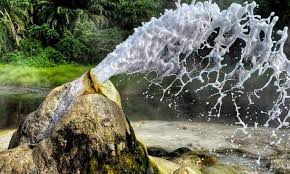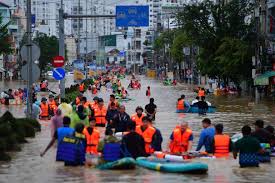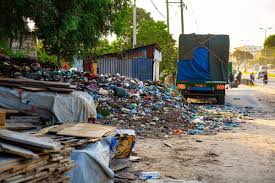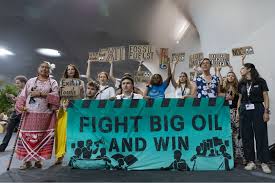Deep within the heart of Semuliki National Park in western Uganda lies one of the country’s most captivating natural wonders: the Sempaya Hot Springs, a geothermal marvel that draws thousands of tourists, researchers, and nature lovers each year.
Located in Ntandi Town Council, Bundibugyo District, these boiling springs have become a cornerstone of Uganda’s ecotourism attractions, offering visitors a rich blend of natural spectacle, cultural heritage, and scientific intrigue.
Reaching the Sempaya Hot Springs requires a bit of adventure. The most common routes are a seven- to eight-hour drive via the Kampala–Masaka–Mbarara–Fort Portal highway or five hours via Kampala–Mubende–Fort Portal. From Fort Portal, it takes about two to three hours to reach the hot springs by car, passing through beautiful and green countryside along the way. The road can be rough, so four-wheel drive vehicles and guides are recommended, especially during the rainy season.
The best time to visit Sempaya hot springs in Semuliki National Park is during the dry seasons, which are typically from December to February and June to August. These months offer the most favorable conditions for exploring the park and its attractions, including the hot springs, as the trails are drier and easier to navigate.
Additionally, during these months, rainfall is minimal, making it easier to walk to the hot springs and enjoy other activities like bird watching and nature walks. The Sempaya nature trail provides greater accessibility and ease of trekking.
The hot springs, dramatically divided into the male (Biteete) and female (Nyansimbi) springs, are known for their intense temperatures, reaching up to 103°C. Steam hisses from the earth as boiling water shoots up two meters into the air, a sight both mesmerizing and humbling.Visitors often take part in the popular tradition of boiling eggs or bananas in the steaming pools, a fun and interactive way to experience geothermal power firsthand.
A photo of tourists boiling eggs at the Sempaya Hot Springs in Uganda.
Tourists boiling matooke in the Sempaya hot springs found in Semuliki national park in Uganda.
Sempaya’s allure is not just in its heat; it lies in the vibrant biodiversity of Semuliki National Park. The park hosts rare primates and hundreds of bird and butterfly species and is set against the dramatic backdrop of the Rwenzori Mountains. Guided walks offer a more profound look into the forest’s ecosystems and wildlife.
Beyond the bubbling waters lies a deeper, spiritual meaning. For the Bamaga clan, who live near the springs, this site is more than a natural wonder; it is sacred.
“These hot springs are part of our daily lives and heritage,” Deo Bataringaya, a local resident, said. “We believe they hold healing powers and are connected to our ancestors.”
Traditional stories say the springs are home to ancestral spirits, and annual rituals are performed to honor these connections. Visitors often get a chance to witness or participate in cultural performances and storytelling sessions, adding a rich layer of meaning to their experience.
During the Pearl of Africa Tourism Expo (POATE) in May 2025, held in Kampala, Hon. Tom Butime, Minister of Tourism, Wildlife, and Antiquities, described Sempaya as one of Uganda’s rarest tourism gems.
“Sempaya hot springs demonstrate how nature and culture coexist in Uganda, from the boiling springs to the traditional stories passed down generations,’’ Hon. Butime said. ’’We must continue to preserve and promote such treasures for both their ecological and economic value.’’
He emphasized the government’s efforts in tourism training, sustainability, and destination marketing, calling for continued support and investment to elevate Uganda’s ecotourism potential.
Dr. James Musinguzi, Executive Director of the Uganda Wildlife Conservation Education Centre (UWEC), described Sempaya as more than a tourist site.
“It is an open-air classroom where we can teach geothermal science, climate adaptation, and conservation to Ugandans and the world,’’ Dr. Musinguzi revealed.
Educational groups, researchers, and students are increasingly using the site for outdoor learning, blending science with real-world experience.
Tourism here supports local livelihoods, from tour guides and home stays to craft sellers and cultural performers. The Uganda Wildlife Authority (UWA) oversees conservation efforts and works alongside local leaders to manage tourism sustainably.
Several lodges and guesthouses near the springs offer accommodation, and the area is developing community-based tourism initiatives to ensure locals benefit from and protect their environment.
Sempaya Hot Springs is more than just a natural attraction; it is a unique blend of nature, culture, and learning. From the boiling waters to the rich traditions and wildlife around it, the springs offer an experience that’s both exciting and meaningful. For anyone exploring Uganda, Sempaya is a must-see destination that leaves a lasting impression.



